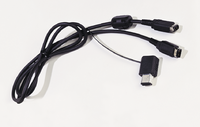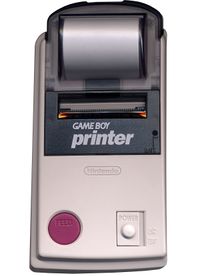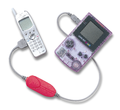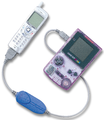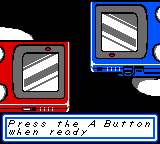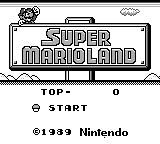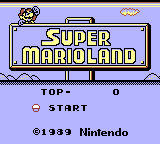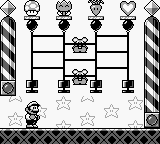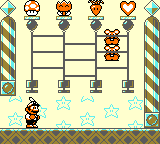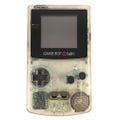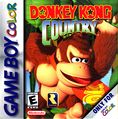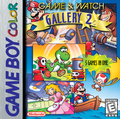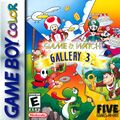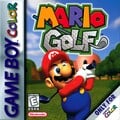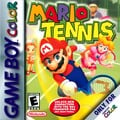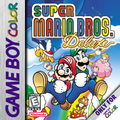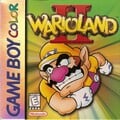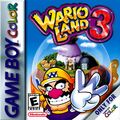Game Boy Color: Difference between revisions
PanchamBro (talk | contribs) mNo edit summary |
m (Text replacement - "{{[Cc]onsoles}}" to "{{Systems}}") |
||
| (199 intermediate revisions by 90 users not shown) | |||
| Line 1: | Line 1: | ||
{{ | {{rewrite-expand|add more information on accessories and their relevance to ''Super Mario''}} | ||
{{ | {{redirect|GBC|the Game Boy Camera|[[Game Boy Camera]]}} | ||
| | {{system infobox | ||
| | |image=[[File:GBC Atomic Purple.png|200px]] | ||
| | |generation=Fifth | ||
| | |release={{release|Japan|October 21, 1998|USA|November 18, 1998|Europe|November 23, 1998|Australia|November 27, 1998|South Korea|December 20, 2000<ref>https://www.gamemeca.com/view.php?gid=5892</ref>}} | ||
| | |discontinued={{release|Japan|September 25, 2003|USA|2003}} | ||
|predecessor=[[Game Boy]]<br>[[Virtual Boy]] | |||
|successor=[[Game Boy Advance]] | |||
}} | }} | ||
{{ | {{quote2|Get into it.|The Game Boy Color slogan}} | ||
The ''' | [[File:GBC Logo.png|150px|left]] | ||
The '''{{wp|Game Boy Color}}''' (also abbreviated as '''GBC''') is the fourth model to the [[Game Boy]] and, in some ways, the handheld counterpart of the [[Nintendo 64]]. It is similar to its predecessors, the most notable differences being that it is lighter, it is capable of displaying multiple colors, and the processing power is twice as fast. It is the final handheld to feature 8-bit graphics. | |||
Some games made for the original | Some games made for the original Game Boy display more colors if played on a Game Boy Color. Other games were made exclusively for the Game Boy Color. The older versions could not play these, but the [[Game Boy Advance]], the [[nwiki:Game Boy Advance SP|Game Boy Advance SP]], and the [[Game Boy Player]] could. It also had the shortest lifetime of a Nintendo handheld, as it was discontinued in 2003, and the last game was released later the same year. | ||
The Game Boy Color has identical controls to that of the original Game Boy and the NES controller. These are {{Button|gbc|A}}, {{Button|gbc|B}}, {{Button|gbc|start}}, and {{Button|gbc|select}} buttons and the {{Button|gbc|Pad}}. There are no compatibility issues with games made for the original Game Boy being run on a Game Boy Color. All games, accessories that are programmed for a particular game (such as a Game Link Cable), and non-standard features (such as the camera protruding out of a [[Game Boy Camera]] cartridge) will work on a Game Boy Color. Playing games that did not have any color can now be played in color using a color palette by using a combination of {{Button|gbc|Pad}} and {{Button|gbc|a}}, {{Button|gbc|b}}, or no additional button being pressed to select presets, similar to the [[Super Game Boy]] how someone can change the colors into the typical monochrome display. | |||
A device known as the [[Game Boy Horror]], modeled after the Game Boy Color, appears in ''[[Luigi's Mansion]]''. | A device known as the [[Game Boy Horror]], modeled after the Game Boy Color, appears in ''[[Luigi's Mansion]]''. | ||
Some Game Boy and Game Boy Color games were once available through the [[Nintendo 3DS]] [[Virtual Console#Nintendo 3DS|Virtual Console]] service until the Nintendo 3DS eShop's closure on March 27, 2023. | |||
==Hardware | ==Hardware specifications== | ||
*CPU: Zilog Z80 (customized) | *CPU: Zilog Z80 (customized) | ||
*CPU Speed: 8 Mhz | *CPU Speed: 8 Mhz | ||
*RAM: 16 kB | *RAM: 16 kB | ||
* | *Resolution: 160x144 pixels (Same as [[Game Boy]]) | ||
*Colors: 32, | *Colors: 32,768 (15-bit RGB) | ||
*Maximum number of colors: 56 | *Maximum number of colors on screen: 56 | ||
*Maximum sprite size: 8x16 or 16x8 pixels | *Maximum sprite size: 8x16 or 16x8 pixels | ||
*Maximum number of sprites: 40 sprites | *Maximum number of sprites on screen: 40 sprites, 10 per scanline (Same as [[Game Boy]]) | ||
*Minimum/Maximum cartridge size: 256 kb - | *Maximum number of colors on sprite: 4 (Same as [[Nintendo Entertainment System|NES]])<ref>http://nesdev.com/NESTechFAQ.htm#chrgfx</ref><ref>http://www.consoledatabase.com/consoleinfo/nintendogameboycolor/</ref> | ||
*Minimum/Maximum cartridge size: 256 kb - 64 mb<ref>http://www.chrisantonellis.com/files/gameboy/gb-programming-manual.pdf</ref> | |||
*Sound: 4 channels | *Sound: 4 channels | ||
===Compatibility modes=== | |||
All older cartridges are compatible with the Game Boy Color, but not always the other way around. Here is a chart to explain. | |||
{| class="wikitable" | |||
! | |||
!Example cartridge | |||
!Usual color | |||
![[Game Boy]] mode | |||
![[Super Game Boy]] mode | |||
!Game Boy Color mode | |||
|- | |||
!Original Game Boy cartridge | |||
|[[File:Donkey Kong Game Boy Cartridge.jpg|180px|link=Donkey Kong (Game Boy)]] | |||
|Gray | |||
|[[File:Check mark.svg|25px]] | |||
|Varies from game to game | |||
|[[File:X mark.svg|25px]] | |||
|- | |||
!Game Boy Color cartridge (black) | |||
|[[File:G&WG3 Cart.jpg|180px|link=Game & Watch Gallery 3]] | |||
|Black | |||
|[[File:Check mark.svg|25px]] | |||
|Varies from game to game | |||
|[[File:Check mark.svg|25px]] | |||
|- | |||
!Game Boy Color cartridge (clear) | |||
|[[File:SMBDX Cart.jpg|180px|link=Super Mario Bros. Deluxe]] | |||
|Clear | |||
|[[File:X mark.svg|25px]] | |||
|[[File:X mark.svg|25px]] | |||
|[[File:Check mark.svg|25px]] | |||
|} | |||
==Accessories== | |||
All [[Official Nintendo Seal|official]] accessories compatible with the [[Game Boy]] are compatible with the Game Boy Color. | |||
===Game Link Cable=== | |||
[[File:GBC Link Cable.png|thumb]] | |||
The same link cable the Game Boy and its variations use can be used on Game Boy Color. | |||
{{br}} | {{br}} | ||
===System | |||
===Game Boy Printer=== | |||
[[File:GameBoyPrinter.jpg|thumb]] | |||
The Game Boy Printer that was used to print pictures from the player's Game Boy. This accessory gained some extended support when the Game Boy Color was released, such as being used in ''[[Super Mario Bros. Deluxe]]'' in [[Super Mario Bros. Deluxe#Toy Box|Toy Box]] mode viewing albums. | |||
{{br}} | |||
===Mobile Adapter GB=== | |||
Only available in Japan, the '''{{wp|Game Boy accessories#Mobile Adapter GB|Mobile Adapter GB}}''' allowed certain games to connect to some Japanese mobile phones. The only strictly ''Super Mario'' games to utilize it were ''[[Mobile Golf]]'' and ''[[Mario Kart: Super Circuit]]''; however, the operation software that came with it (''[[Mobile Trainer]]'') features references to the ''Super Mario'' franchise. This peripheral was referred to as the '''Mobile Game Boy Adapter''' [https://archive.is/o56o4 in a translated Iwata Asks interview]. The device was released exclusively to Japan on January 27, 2001 and was not a commercial success. | |||
A part of the service was the '''Mobile System GB''', which allowed players to log on to the internet to access a network for wireless play across the nation via Nintendo servers. Using this server, ''Mobile Golf'' could be played online wirelessly, a precursor to the [[Nintendo Wi-Fi Connection]] and [[Nintendo Network]]. Just as the device was not successful, the Mobile System GB was not successful and closed down on December 14, 2002. | |||
{{NIWA|title=Mobile Adapter GB|NWiki=Mobile Game Boy Adapter|Bulbapedia=Mobile Game Boy Adapter}} | |||
<gallery> | <gallery> | ||
File: | GBC Mobile Adapter GB Panasonic.png|A version compatible with a {{wp|Panasonic}} mobile phone | ||
File:GBC | GBC Mobile Adapter GB Kyocera.png|A version compatible with a {{wp|Kyocera}} mobile phone | ||
</gallery> | |||
==IR communication== | |||
[[File:SMBDX IR Mode.png|thumb|left]] | |||
There is an infrared LED, indicated by the black rectangle on top of the unit, that a Game Boy Color can use. This was the primary method in which [[Bulbapedia:Mystery Gift|Mystery Gift]] worked in the [[Bulbapedia:Generation II|Generation II ''Pokémon'']] games, but ''[[Super Mario Bros. Deluxe]]'' can make use of this feature by sending high scores and other data to other copies. This feature is exclusive to the Game Boy Color and is not present in later Game Boy devices. | |||
{{br}} | |||
==BIOS colors== | |||
These colors will also work on a [[Game Boy Advance]], a Game Boy Advance SP and a [[Game Boy Player]] when a [[Game Boy]] game is inserted. | |||
{| class="wikitable" | |||
! | |||
! {{button|Padup}} | |||
! {{button|Paddown}} | |||
! {{button|Padleft}} | |||
! {{button|Padright}} | |||
|- | |||
! No input | |||
| [[File:GBC Brown Palette.png|160px]]<br>Brown | |||
| [[File:GBC Pale Yellow Palette.png|160px]]<br>Pale Yellow<ref>[http://replacementdocs.com/download.php?view.5441 GBC Manual]</ref>/Pastel Mix<ref>[https://www.nintendo.com/consumer/downloads/agsmanual_english.pdf GBA Manual]</ref> | |||
| [[File:GBC Blue Palette.png|160px]]<br>Blue | |||
| [[File:GBC Green Palette.png|160px]]<br>Green | |||
|- | |||
! {{button|gbc|a}} | |||
| [[File:GBC Red Palette.png|160px]]<br>Red | |||
| [[File:GBC Orange Palette.png|160px]]<br>Orange | |||
| [[File:GBC Dark Blue Palette.png|160px]]<br>Dark Blue | |||
| [[File:GBC Dark Green Palette.png|160px]]<br>Dark Green | |||
|- | |||
! {{button|gbc|b}} | |||
| [[File:GBC Dark Brown Palette.png|160px]]<br>Dark Brown | |||
| [[File:GBC Yellow Palette.png|160px]]<br>Yellow | |||
| [[File:GBC Gray Palette.png|160px]]<br>Original Gray | |||
| [[File:GBC Reverse Palette.png|160px]]<br>Reverse | |||
|} | |||
{{more images|Super Mario Land and Super Mario Land 2: 6 Golden Coins are not the only games to have this functionality}} | |||
{{multiple image | |||
|align=left | |||
|width=160 | |||
|direction=horizontal | |||
|image1=SML B&W Title Screen.png | |||
|caption1=On Game Boy | |||
|image2=GBC SML Title Screen.png | |||
|caption2=On Game Boy Color and later handhelds | |||
|image3=SML2 Ladder Game.png | |||
|caption3=On Game Boy | |||
|image4=Supermarioland2the6goldencoins bonus room.png | |||
|caption4=On Game Boy Color and later handhelds | |||
}} | |||
The Game Boy Color will display a unique hardware-coded palette of colors for some titles using an internal list of original Game Boy games. Two such instances are ''[[Super Mario Land]]'' and ''[[Super Mario Land 2: 6 Golden Coins]]''. | |||
{{br}} | |||
==Gallery== | |||
===System gallery=== | |||
<gallery> | |||
GBC Boot Screen.gif|Boot screen | |||
</gallery> | |||
====Standard colors==== | |||
<gallery> | |||
GBC Berry.png|Berry | |||
GBC Grape.png|Grape | |||
GBC Kiwi.png|Kiwi | |||
GBC Dandelion.png|Dandelion | |||
GBC Teal.png|Teal | |||
GBC Clear.jpg|{{Conjectural|Clear}} (Japan only) | |||
</gallery> | |||
====Special editions==== | |||
<gallery> | |||
GBC Mario Atomic Purple.jpg|Mario-themed Atomic Purple Game Boy Color (Japan only) | |||
GBC Mario Clear.jpg|Mario-themed {{Conjectural|Clear}} Game Boy Color (Japan only) | |||
</gallery> | |||
===Game gallery=== | |||
<gallery> | |||
Donkey Kong Country GBC US box art.jpg|''[[Donkey Kong Country (Game Boy Color)|Donkey Kong Country]]'' | |||
Dinky and Dixie Kong GBC cover art.jpg|''[[Donkey Kong Land III|Donkey Kong GB: Dinky Kong & Dixie Kong]]'' | |||
Game Watch Gallery 2 NA boxart.png|''[[Game & Watch Gallery 2]]'' | |||
Gameandwatch3.jpg|''[[Game & Watch Gallery 3]]'' | |||
Mario Family cover.png|''[[Mario Family]]'' | |||
MarioGolfGBCBoxArtCover.jpg|''[[Mario Golf (Game Boy Color)|Mario Golf]]'' | |||
MarioTennisGBC.jpg|''[[Mario Tennis (Game Boy Color)|Mario Tennis]]'' | |||
MobileGolfBoxart.gif|''[[Mobile Golf]]'' | |||
SMB Deluxe cover art.png|''[[Super Mario Bros. Deluxe]]'' | |||
Wario Land 2 GBC NA cover.jpg|''[[Wario Land II]]'' | |||
Warioland3.jpg|''[[Wario Land 3]]'' | |||
</gallery> | </gallery> | ||
==Trivia== | ==Trivia== | ||
* | *The Game Boy Color, the [[Nintendo GameCube]], and the [[Wii U]] were all released on the same day of their respective years in the Americas. | ||
* | *This is Nintendo of Australia's first portable console. | ||
*Each letter from the word "COLOR" in the logo is displayed in one of the system's five launch colors. | |||
{{NIWA|NWiki=1}} | *In many English-speaking countries (e.g. Great Britain), the correct spelling for "color" is "colour". Despite this, the name of the console was never changed outside of America to reflect this difference. | ||
{{ | *The Chronicle in ''[[Super Smash Bros. Brawl]]'' does not treat the Game Boy Color as separate from the original Game Boy. | ||
==References== | |||
{{NIWA|Bulbapedia=1|HardDrop=1|NWiki=1|StarfyWiki=Terminology#G|StrategyWiki=Category:Game Boy Color|WarsWiki=1|WiKirby=1|ZeldaWiki=1}} | |||
<references/> | |||
{{GBC}} | |||
{{Systems}} | |||
[[de:Game Boy Color]] | |||
[[it:Game Boy Color]] | |||
[[Category:Systems]] | |||
Latest revision as of 17:14, April 20, 2024
It has been requested that this article be rewritten and expanded to include more information. Reason: add more information on accessories and their relevance to Super Mario
- "GBC" redirects here. For the Game Boy Camera, see Game Boy Camera.
| Game Boy Color | |
|---|---|
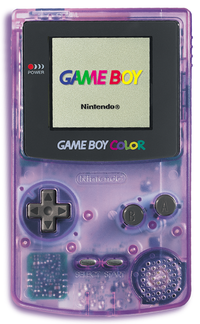
| |
| Generation | Fifth generation |
| Release date | |
| Discontinued | |
| Predecessor | Game Boy Virtual Boy |
| Successor | Game Boy Advance |
- “Get into it.”
- —The Game Boy Color slogan
The Game Boy Color (also abbreviated as GBC) is the fourth model to the Game Boy and, in some ways, the handheld counterpart of the Nintendo 64. It is similar to its predecessors, the most notable differences being that it is lighter, it is capable of displaying multiple colors, and the processing power is twice as fast. It is the final handheld to feature 8-bit graphics.
Some games made for the original Game Boy display more colors if played on a Game Boy Color. Other games were made exclusively for the Game Boy Color. The older versions could not play these, but the Game Boy Advance, the Game Boy Advance SP, and the Game Boy Player could. It also had the shortest lifetime of a Nintendo handheld, as it was discontinued in 2003, and the last game was released later the same year.
The Game Boy Color has identical controls to that of the original Game Boy and the NES controller. These are ,
,
, and
buttons and the
. There are no compatibility issues with games made for the original Game Boy being run on a Game Boy Color. All games, accessories that are programmed for a particular game (such as a Game Link Cable), and non-standard features (such as the camera protruding out of a Game Boy Camera cartridge) will work on a Game Boy Color. Playing games that did not have any color can now be played in color using a color palette by using a combination of
and
,
, or no additional button being pressed to select presets, similar to the Super Game Boy how someone can change the colors into the typical monochrome display.
A device known as the Game Boy Horror, modeled after the Game Boy Color, appears in Luigi's Mansion.
Some Game Boy and Game Boy Color games were once available through the Nintendo 3DS Virtual Console service until the Nintendo 3DS eShop's closure on March 27, 2023.
Hardware specifications[edit]
- CPU: Zilog Z80 (customized)
- CPU Speed: 8 Mhz
- RAM: 16 kB
- Resolution: 160x144 pixels (Same as Game Boy)
- Colors: 32,768 (15-bit RGB)
- Maximum number of colors on screen: 56
- Maximum sprite size: 8x16 or 16x8 pixels
- Maximum number of sprites on screen: 40 sprites, 10 per scanline (Same as Game Boy)
- Maximum number of colors on sprite: 4 (Same as NES)[2][3]
- Minimum/Maximum cartridge size: 256 kb - 64 mb[4]
- Sound: 4 channels
Compatibility modes[edit]
All older cartridges are compatible with the Game Boy Color, but not always the other way around. Here is a chart to explain.
| Example cartridge | Usual color | Game Boy mode | Super Game Boy mode | Game Boy Color mode | |
|---|---|---|---|---|---|
| Original Game Boy cartridge | 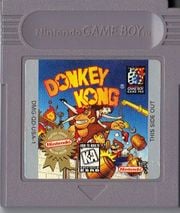
|
Gray | Varies from game to game | ||
| Game Boy Color cartridge (black) | 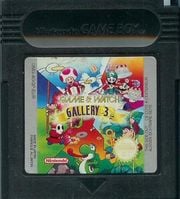
|
Black | Varies from game to game | ||
| Game Boy Color cartridge (clear) | 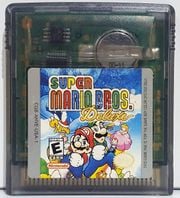
|
Clear |
Accessories[edit]
All official accessories compatible with the Game Boy are compatible with the Game Boy Color.
Game Link Cable[edit]
The same link cable the Game Boy and its variations use can be used on Game Boy Color.
Game Boy Printer[edit]
The Game Boy Printer that was used to print pictures from the player's Game Boy. This accessory gained some extended support when the Game Boy Color was released, such as being used in Super Mario Bros. Deluxe in Toy Box mode viewing albums.
Mobile Adapter GB[edit]
Only available in Japan, the Mobile Adapter GB allowed certain games to connect to some Japanese mobile phones. The only strictly Super Mario games to utilize it were Mobile Golf and Mario Kart: Super Circuit; however, the operation software that came with it (Mobile Trainer) features references to the Super Mario franchise. This peripheral was referred to as the Mobile Game Boy Adapter in a translated Iwata Asks interview. The device was released exclusively to Japan on January 27, 2001 and was not a commercial success.
A part of the service was the Mobile System GB, which allowed players to log on to the internet to access a network for wireless play across the nation via Nintendo servers. Using this server, Mobile Golf could be played online wirelessly, a precursor to the Nintendo Wi-Fi Connection and Nintendo Network. Just as the device was not successful, the Mobile System GB was not successful and closed down on December 14, 2002.
IR communication[edit]
There is an infrared LED, indicated by the black rectangle on top of the unit, that a Game Boy Color can use. This was the primary method in which Mystery Gift worked in the Generation II Pokémon games, but Super Mario Bros. Deluxe can make use of this feature by sending high scores and other data to other copies. This feature is exclusive to the Game Boy Color and is not present in later Game Boy devices.
BIOS colors[edit]
These colors will also work on a Game Boy Advance, a Game Boy Advance SP and a Game Boy Player when a Game Boy game is inserted.
| No input | 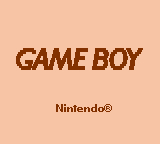 Brown |
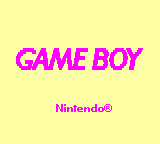 Pale Yellow[5]/Pastel Mix[6] |
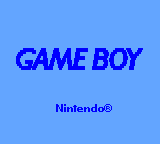 Blue |
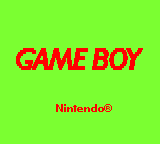 Green |
|---|---|---|---|---|
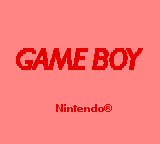 Red |
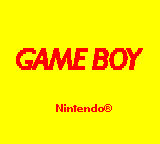 Orange |
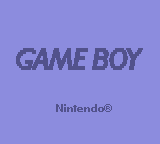 Dark Blue |
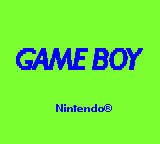 Dark Green | |
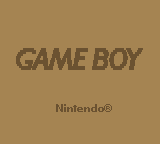 Dark Brown |
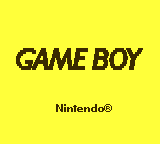 Yellow |
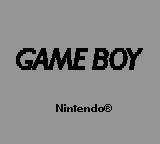 Original Gray |
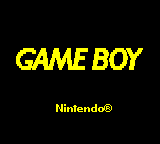 Reverse |
It has been requested that more images be uploaded for this article. Remove this notice only after the additional image(s) have been added. Reason: Super Mario Land and Super Mario Land 2: 6 Golden Coins are not the only games to have this functionality
The Game Boy Color will display a unique hardware-coded palette of colors for some titles using an internal list of original Game Boy games. Two such instances are Super Mario Land and Super Mario Land 2: 6 Golden Coins.
Gallery[edit]
System gallery[edit]
Standard colors[edit]
Special editions[edit]
Game gallery[edit]
Trivia[edit]
- The Game Boy Color, the Nintendo GameCube, and the Wii U were all released on the same day of their respective years in the Americas.
- This is Nintendo of Australia's first portable console.
- Each letter from the word "COLOR" in the logo is displayed in one of the system's five launch colors.
- In many English-speaking countries (e.g. Great Britain), the correct spelling for "color" is "colour". Despite this, the name of the console was never changed outside of America to reflect this difference.
- The Chronicle in Super Smash Bros. Brawl does not treat the Game Boy Color as separate from the original Game Boy.
References[edit]
| Game Boy Color games | |
|---|---|
| Super Mario franchise | Super Mario Bros. Deluxe (1999) • Mario Golf (1999) • Mario Tennis (2000) • Mobile Golf (2001) • Mario Family (2001) |
| Donkey Kong franchise | Donkey Kong GB: Dinky Kong & Dixie Kong (2000) • Donkey Kong Country (2000) |
| Wario franchise | Wario Land II* (1998) • Wario Land 3 (2000) |
| Other | Game & Watch Gallery 2* (1998) • The Legend of Zelda: Link's Awakening DX* (1998) • Game & Watch Gallery 3* (1999) |
| Video game systems and add-ons | |
|---|---|
| Nintendo home consoles | Nintendo Entertainment System/Family Computer (Family BASIC, Family Computer Disk System) • Super Nintendo Entertainment System/Super Famicom (Satellaview, Super Game Boy) • Nintendo 64 (Nintendo 64DD) • Nintendo GameCube (Game Boy Player) • Wii (Virtual Console, WiiWare) • Wii U (Virtual Console) |
| Nintendo handhelds | Game & Watch • Game Boy • Virtual Boy • Game Boy Color • Game Boy Advance • Nintendo DS (Nintendo DSi, DSiWare) • Nintendo 3DS (Virtual Console) |
| Other | MS-DOS • VS. System • Nintendo PlayChoice-10 • Nelsonic Game Watch • Super Mario Bros. Watch • Gamewatch Boy • Philips CD-i • Mini Classics • Nintendo Switch • Triforce • Visteon Dockable Entertainment System • Classics • LodgeNet |

